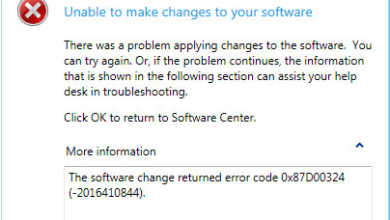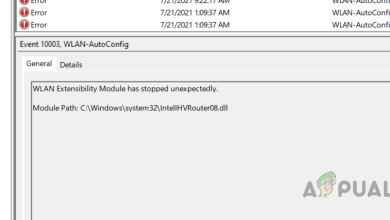Cat8 Ethernet Cable: Everything You Need to Know in 2024
- Ethernet cables, categorized as CAT6, CAT6A, CAT7, and CAT8, differ in bandwidth, speed, and reliability. They connect devices within LANs and to the internet.
- CAT6 supports up to 10 Gbps at shorter distances, CAT6A extends to 100 meters at the same speed, CAT7 offers up to 100 Gbps at very short distances, and CAT8 delivers up to 40 Gbps with the highest bandwidth.
- CAT6 and CAT6A are sufficient for most home and office needs. CAT8 is overkill for standard setups due to high costs and excessive capabilities beyond current average needs.
Ethernet cables are known for providing high-speed, stable network connections, which is why many businesses today heavily invest in their networking infrastructure. In fact, the global ethernet cable industry is projected to grow to a staggering $31 billion by 2030, marking a roughly 95% increase from its current value.
These cables themselves have multiple standards based on the bandwidth, speed, and reliability they offer. This article will serve as a guide to understanding and selecting between the different categories of cabling and which one best suits your needs.
Table of Contents
What Exactly is an Ethernet Cable?
Ethernet cables are used to physically connect devices such as computers, laptops, printers, consoles, and smart TVs within the LAN, and then each of them to the internet.
The reason why ethernet cables are essential is that they act as highways for your data to flow. Just like a congested road will only allow data to be transmitted slowly, limitations in cable standards can slow down data transmission speed. This is why different standards of cables exist that can be used anywhere from your house to high-speed data server applications.
READ MORE: The Best Ethernet Cables For Gaming ➜
Common Types of Cat Ethernet Cables
Category or “CAT” cables are standardized twisted-pair cables for computer networks. They are mainly used in industrial and commercial applications to connect devices such as routers, and switches and use the standardized RJ45 connector.

At the moment, CAT 8 is the fastest Ethernet standard, but older options such as CAT 6, CAT 6A, and CAT 7 also work since all of these cables are backward compatible.
↪ CAT 1 -5
Today, most Ethernet cables are CAT6 or higher. Before that, standards CAT1-5 also existed; these were primarily used for telephone lines and voice applications. The earliest CAT cables couldn’t transmit data at all, only voice. However, the CAT5 standard, introduced in 1995, became the norm for Ethernet cables worldwide due to its significantly improved bandwidth (100MHz) and support for faster speeds (100Mbps).
1. CAT6
CAT 6 was introduced in 1997 and supports up to 10 Gbps speeds over distances of 55 meters and 5 Gbps over 100 meters. This standard operates at a frequency of 250MHz and is mainly used for high-speed connections in small offices and homes where the usage is limited to surfing the internet, gaming, streaming, and basic file transfers.
This standard of cables is also backward compatible with older Ethernet standards, such as 10BASE-T and 100BASE-TX. CAT 6 is also a lot more affordable than some of the newer standards that would offer little to no benefits on small-scale applications.
2. CAT6A
The successor to CAT 6, CAT 6A boasts a tenfold increase in network speed, supporting up to 10 Gbps over the entire 100 meters and double the bandwidth at 500MHz. Each pair and the whole cable are shielded, providing better protection against interference and crosstalk.
Introduced in 2009, CAT 6A is considered more than enough for gaming and office environments. Even if you need even higher speeds for data centers, or large file transfers, especially over longer cable runs, CAT 6A may be the superior option for future-proofing compared to, say, CAT 7.
READ MORE: Cat6 vs Fiber Optics Cabling: What is the Difference ➜
3. CAT7
CAT 7 deviates from its predecessors by using a proprietary connector design, the GG45, which replaces the standard RJ45. This non-standard connector made it difficult for users to integrate CAT 7 cables into existing networking systems. Additionally, the CAT 7 standard is not recognized by the Institute of Electrical and Electronics Engineers (IEEE).

While CAT 7 boasts speeds of up to 100 Gbps over short distances (15-30 meters) and 10 Gbps over 100 meters, its frequency increase over CAT 6A is minimal, reaching only 600MHz (compared to CAR 6A’s 500MHz). Due to these limitations, CAT 7 cables are primarily used in specific high-performance networking environments, particularly industrial applications.
| CAT 6 | CAT 6A | CAT 7 | CAT 8 | |
| Frequency (MHz) | 250 | 500 | 600 | 2000 |
| Max Speed (Gbps) | 10 | 10 | 10 | 25/40 |
| Max Length for Full Speed (m) | 100 | 100 | 100 | 30 (40 Gbps), 100 (25 Gbps) |
| Shielding | Individual foil | Individual foil & overall braid | Individual foil & overall braid + shielded plug | Individual foil & overall braid + shielded plug |
| Typical Price per Meter | Low | Moderate | High | High |
CAT8 Ethernet Cable
CAT 8 is the newest standard in the line of “Category” ethernet cables, and it maxes out at 40 Gbps up to 30 meters, and the standard CAT 6 rate of 10 Gbps at up to 100 meters. However, it boasts an impressive bandwidth of 2000MHz, eight times that of a standard CAT 6 cable. You’ll find these cables in powerful server environments and rarely ever being fully utilized in non-commercial settings.

Should You Use CAT8 for Gaming?
While maxing out the internet speed and bandwidth on a CAT 8 cable can allow you to download a 50GB file in less than 10 seconds, the fastest home internet speeds currently available in the US reach only 8 Gbps, with average speeds falling below that.
Furthermore, most motherboards currently only have 1 Gbps Ethernet ports, and network cards capable of handling the full 40 Gbps speed offered by CAT 8 cables can cost upwards of $500, nearly the price of a high-end motherboard. Even then, these high-performance network cards typically don’t use CAT 8 cables; they rely on QSFP+ connectors designed for fiber optic or twinaxial cables.
Cheap CAT 8 Cables on the Internet
Ever since CAT 8 made its way to the mainstream market, users were taken aback by the generational leap; however, most didn’t fully understand what these numbers meant. As a result, the popularity of these cables skyrocketed, with most manufacturers selling cheap CAT 8 cables on the internet, likely misleading consumers.
Many people who have purchased these cables have reported significant drops in transfer speeds. This is likely due to poor quality control. More importantly, the issue can be attributed to misleading marketing, as some cables might only be regular CAT 5 or CAT 6 cables, only mislabeled.
READ MORE: How to Fix Ethernet Port Not Working on Windows ➜
Recommended CAT Cables
While the market is flooded with counterfeits, there are still good quality cables available. We’ve listed some of the better CAT cables you can find on the market today:
- Nippon Labs CAT8 – 0.5ft
- GearIT CAT8 – 7ft
- Monoprice CAT8 – 40ft
Conclusion
While CAT 8 is the fastest Ethernet standard currently available, it primarily targets the industrial segment for high-speed applications like switch-to-switch connections and data centers. This is why CAT 6 or 6A remains more than sufficient for most home use cases.
FAQs
Cat8 cables use the RJ45 connector, which means that it will most probably work with your router. Consult your router’s manual for more information.
It’s typically not advisable to spend the extra cash on a CAT 8 cable, primarily because there are little to no scenarios where they’ll be useful. Technically, a CAT 6A cable would be more than enough for office and home use.
At the moment, CAT 6A cables seem to be the ideal choice. Since all CAT cables except CAT 7 use the standardized RJ45 connector, they can work interchangeably with one another. Buying CAT 6 will not only save you money but also allow you to fully utilize it.
 Reviewed by
Reviewed by 




